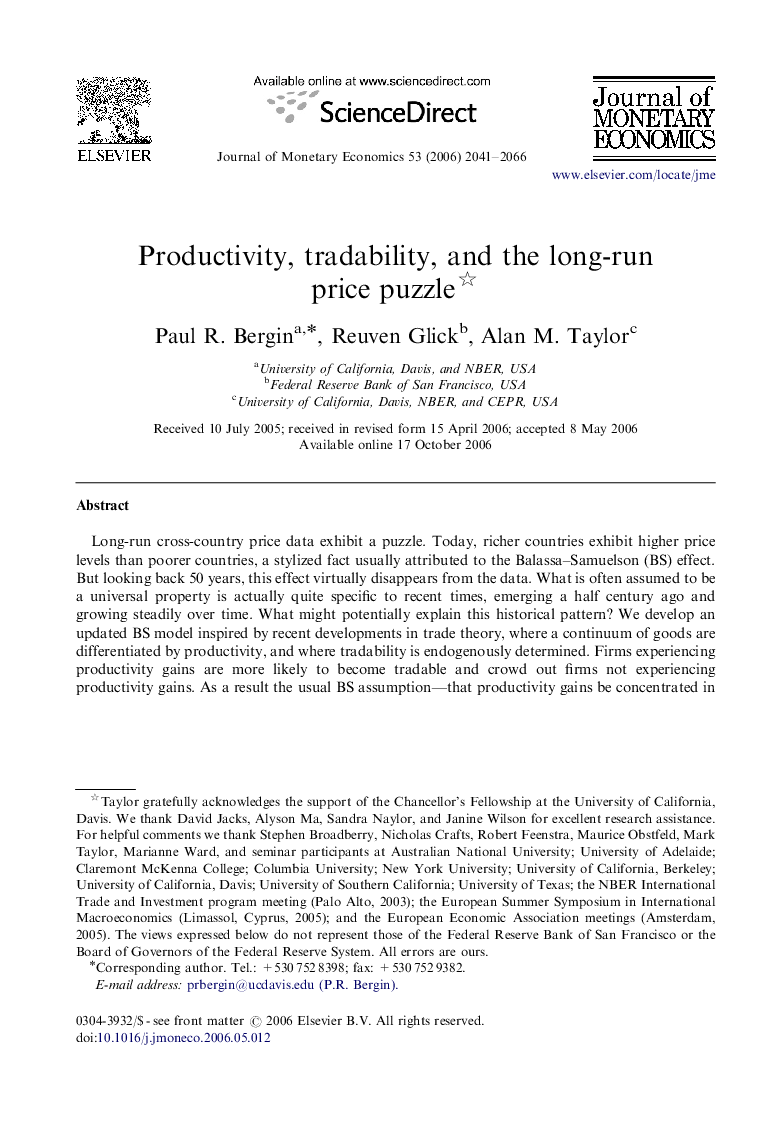| Article ID | Journal | Published Year | Pages | File Type |
|---|---|---|---|---|
| 968065 | Journal of Monetary Economics | 2006 | 26 Pages |
Long-run cross-country price data exhibit a puzzle. Today, richer countries exhibit higher price levels than poorer countries, a stylized fact usually attributed to the Balassa–Samuelson (BS) effect. But looking back 50 years, this effect virtually disappears from the data. What is often assumed to be a universal property is actually quite specific to recent times, emerging a half century ago and growing steadily over time. What might potentially explain this historical pattern? We develop an updated BS model inspired by recent developments in trade theory, where a continuum of goods are differentiated by productivity, and where tradability is endogenously determined. Firms experiencing productivity gains are more likely to become tradable and crowd out firms not experiencing productivity gains. As a result the usual BS assumption—that productivity gains be concentrated in the traded goods sector—emerges endogenously, and the BS effect on relative price levels likewise evolves gradually over time.
